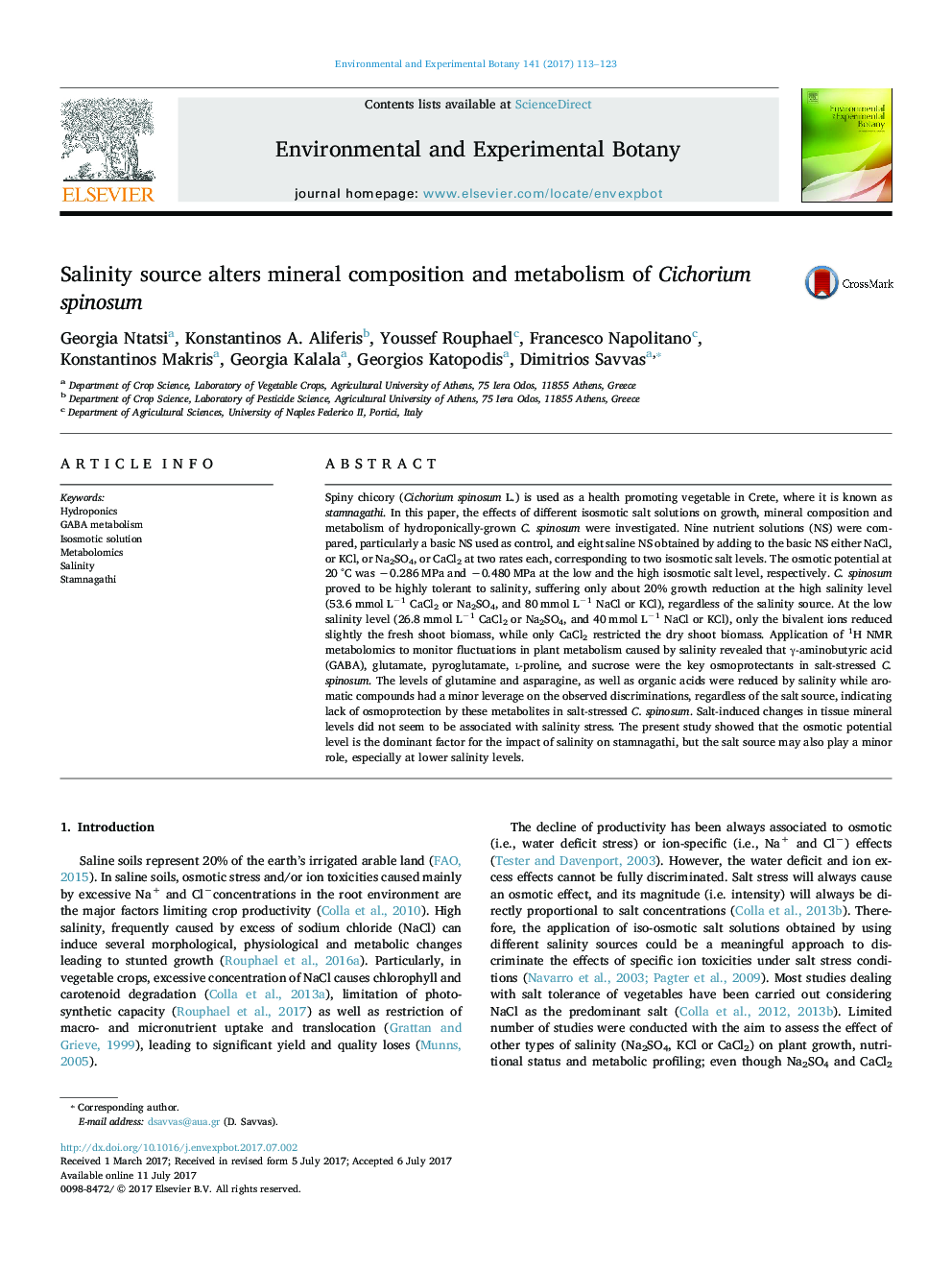| Article ID | Journal | Published Year | Pages | File Type |
|---|---|---|---|---|
| 5766606 | Environmental and Experimental Botany | 2017 | 11 Pages |
â¢1HNMR metabolomics successfully revealed salinity-induced changes in plant metabolism.â¢Growth of C. spinosum was not affected by salt-induced changes in tissue minerals.â¢Osmotic rather than ion toxic effects determine the impact of salinity on C. spinosum.â¢Salinity enhances glutamate, pyroglutamate, l-proline, GABA & sucrose in C. spinosum.
Spiny chicory (Cichorium spinosum L.) is used as a health promoting vegetable in Crete, where it is known as stamnagathi. In this paper, the effects of different isosmotic salt solutions on growth, mineral composition and metabolism of hydroponically-grown C. spinosum were investigated. Nine nutrient solutions (NS) were compared, particularly a basic NS used as control, and eight saline NS obtained by adding to the basic NS either NaCl, or KCl, or Na2SO4, or CaCl2 at two rates each, corresponding to two isosmotic salt levels. The osmotic potential at 20 °C was â0.286 MPa and â0.480 MPa at the low and the high isosmotic salt level, respectively. C. spinosum proved to be highly tolerant to salinity, suffering only about 20% growth reduction at the high salinity level (53.6 mmol Lâ1 CaCl2 or Na2SO4, and 80 mmol Lâ1 NaCl or KCl), regardless of the salinity source. At the low salinity level (26.8 mmol Lâ1 CaCl2 or Na2SO4, and 40 mmol Lâ1 NaCl or KCl), only the bivalent ions reduced slightly the fresh shoot biomass, while only CaCl2 restricted the dry shoot biomass. Application of 1H NMR metabolomics to monitor fluctuations in plant metabolism caused by salinity revealed that γ-aminobutyric acid (GABA), glutamate, pyroglutamate, l-proline, and sucrose were the key osmoprotectants in salt-stressed C. spinosum. The levels of glutamine and asparagine, as well as organic acids were reduced by salinity while aromatic compounds had a minor leverage on the observed discriminations, regardless of the salt source, indicating lack of osmoprotection by these metabolites in salt-stressed C. spinosum. Salt-induced changes in tissue mineral levels did not seem to be associated with salinity stress. The present study showed that the osmotic potential level is the dominant factor for the impact of salinity on stamnagathi, but the salt source may also play a minor role, especially at lower salinity levels.
